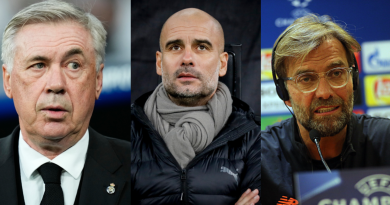Young pitchers push limits as UCL injuries rise across US baseball
A generation of young pitchers is facing a troubling trend that doctors, trainers and families are struggling to keep up with, a sharp increase in severe elbow injuries tied to the sport’s growing obsession with speed. What used to be a rare and career altering diagnosis for elite professionals is now appearing in middle school and high school bullpens across the United States.
The issue came into focus for college pitcher Kade Durnin the moment he felt a sudden jolt run up his arm during a workout. His elbow had never felt anything like it, and the doctor’s confirmation of a torn ulnar collateral ligament placed him directly inside a nationwide surge of similar cases.
UCL injuries affect the ligament that stabilizes the elbow during the throwing motion, a structure that is relatively small compared to the force required to throw a baseball at high speeds. When it tears, many athletes require Tommy John surgery, a procedure that replaces the ligament with a tendon from elsewhere in the body. Once considered a last resort for injured professionals, the surgery has become disturbingly common among adolescents.
Rising toll among young athletes
According to reporting from CNN Sports, New York Yankees head team physician Dr. Christopher Ahmad now performs more Tommy John surgeries on teenagers than on professionals. Two decades ago, most of his cases came from college or minor league players. Today, he estimates that many of his weekly procedures involve high schoolers, some not yet old enough to drive.
Read also: Leafs try to regroup on quiet monday in Toronto
Broader data reflects the shift. In the mid 2000s, only a handful of top amateur draft prospects had undergone the surgery before reaching professional consideration. By the mid 2020s, those numbers had multiplied, signaling a deeper change in how young pitchers train and compete.
A culture built on velocity
Many experts point to a straightforward explanation, young pitchers are throwing harder than ever before. The modern game prizes fast radar gun readings, and the pressure to match peers has intensified. Athletic trainer Frank Alexander, who works closely with Ahmad’s patients, said the chase for upper level velocity has become a defining feature of youth baseball.
Training facilities now offer aggressive velocity building programs, some with specialized drills designed to push athletes to their physical limit. Durnin said he was attempting a pulldown drill in hopes of breaking a facility record of 101 miles per hour when his elbow gave out. He acknowledged that the drill can be useful but noted that teenagers often push it too far in pursuit of attention from scouts.
Fifteen year old Alex Hoffman learned a similar lesson when he tore his UCL while juggling the roles of both pitcher and catcher. Without scheduled rest, his arm never had the chance to recover between games, a pattern that mirrors what many trainers see across youth baseball circuits.
Read also: Former Canadian Olympian faces expanded U,S, charges in long running drug case
Pressure that starts early
While many athletes blame themselves for pushing too hard, trainers say outside forces also play a role. Alexander recalled situations where teenagers recovering from surgery were urged to reach specific velocity targets by coaches or recruiters, even when their elbows were still healing. In one case, a high school pitcher reinjured himself while trying to prove he could meet the expectations tied to a verbal college commitment. The offer was later withdrawn.
A study cited by CNN Sports found that a vast majority of youth teams violated Pitch Smart guidelines, recommendations that limit pitch counts and rest periods. Dr. Ahmad said that competitive pressures on coaches, from high school programs to travel teams, often result in overuse of their best young pitchers.
Understanding the surgery, and its limits
Tommy John surgery, first performed in the 1970s, has produced several remarkable comeback stories. Modern fans have watched stars like Shohei Ohtani and Shane Bieber return to elite form after extended recovery periods. Yet experts caution that not every athlete follows that path. Ahmad said that while many pitchers return to throwing competitively, their performance may not fully return to previous levels.
The procedure also requires a year or more of recovery, time that young athletes often find emotionally draining. Some athletes experience significant anxiety about falling behind peers or losing their identity as players. Research from Ahmad, Alexander and colleagues found that nearly one third of athletes who suffer a UCL injury show symptoms consistent with probable post traumatic stress disorder.
Read also: Latest NHL draft update reveals a growing fight for second place
The emotional strain often begins at diagnosis. Alexander recalled one young prospect who became visibly shaken when told his ligament was torn, his reaction underscoring how closely many teenagers tie their futures to baseball.
The broader forces shaping the trend
Youth baseball in the United States has changed significantly in the past two decades. Year round travel teams, private pitching instructors, showcase tournaments and data driven training systems have made the sport more specialized and competitive at early ages. While these resources offer opportunities, they also increase physical demands on young bodies that have not fully matured.
At the same time, the financial stakes of professional baseball have grown dramatically. Contracts worth hundreds of millions of dollars have created a belief among teenagers that extraordinary velocity could change their lives. That mindset drives some to train through pain or skip recommended rest.
Searching for solutions
Major League Baseball has adopted safety reforms in the past, but altering pitching rules would require a fundamental change to how the sport is played. Some experts have suggested expanded pitching rotations or enforced rest periods, though implementation at the youth level remains inconsistent.
Read also: Chiefs coach brushes off Trump’s criticism of NFL kickoff rules
Ahmad noted the paradox at the heart of the issue. The qualities the sport rewards, velocity, endurance and high workload, are the same forces that put pitchers at risk. As long as the radar gun remains central to baseball’s talent evaluation, young athletes may continue to push their arms to the edge.
Read also: LeBron James was hit with a controversial ban after violating eligibility rules




